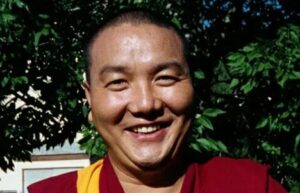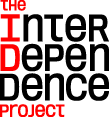
ABOUT THE MEDITATION
This week’s meditation session is led by Lama Tashi and the theme is Realization.
The guided meditation begins at 19:51.
For centuries Himalayan practitioners have used meditation to quiet the mind, open the heart, calm the nervous system, and increase focus. Now Western scientists, business leaders, and the secular world have embraced meditation as a vital tool for brain health.
Whether you’re a beginner, a dabbler, or a skilled meditator seeking the company of others, join expert teachers in a 45-minute weekly program designed to fit into your lunch break. Each session is inspired by a different work of art from the Rubin Museum’s collection and includes an opening talk, a 20-minute meditation session, and a closing discussion.
RELATED ARTWORK

One of the most recognizable mantras in the world is om mani padme hum. It is associated with the bodhisattva Avalokiteshvara, who has countless forms, both peaceful and wrathful, red and white, with thousands of arms, or just two.
Depicted here is the red Avalokiteshvara. Painted in warm hues, he beckons viewers with his right hand, held in the gesture of generosity. Around his radiant body, are worldly deities, many originating in the Hindu tradition, such as Shiva, Brahma, Surya, Varuna, Ananta, Chandra, Vishnu, and Agni. This symbolizes his ability to see and manifest his compassion in all realms while all other deities pay homage to him.
Avalokiteshvara is a bodhisattva who has made a vow to remain in the cycle of rebirth through countless lifetimes to work for the benefit of other beings. Bodhisattvas vow not to pass into the blissful state of nirvana until all sentient beings are free of the cycle of samsara. Practitioners visualize Avalokiteshvara aspiring to make their body, speech, and mind indistinguishable from his. Link to artwork in the Museum’s collection.
ABOUT THE SPEAKER

Geshe Ngawang Tashi Bapu, known as Lama Tashi is the President of the Siddhartha Foundation, Mundgod. He served as the Principal Chant Master of the Dalai Lama’s Drepung Loseling Monastery. He was Associate Professor in Buddhist Philosophy at the Central Institute of Himalayan Culture Studies, in India for 15 years and was the Director of the Institute for six years.
Lama Tashi’s Tibetan “deep voice” is world renowned. He was the first Tibetan Buddhist monk to be nominated for a Grammy with his recording of Tibetan Master Chants.
Lama Tashi has shared his considerable knowledge at Buddhist and spiritual centers and universities throughout the US. He gives talks on compassion, wisdom, Tibetan Buddhist philosophy, yoga, meditation and culture, as well as workshops on Tibetan deep voice chanting. In addition, Lama Tashi focuses his teachings on “living a life of happiness,” a secular approach to achieving a happier life.
This program is presented in partnership with Sharon Salzberg and teachers from the New York Insight Meditation Center, the Interdependence Project, and Parabola Magazine and supported by the Frederick P. Lenz Foundation for American Buddhism.

